The Ancient Vineyards of Georgia: Tracing the Origins of Viticulture
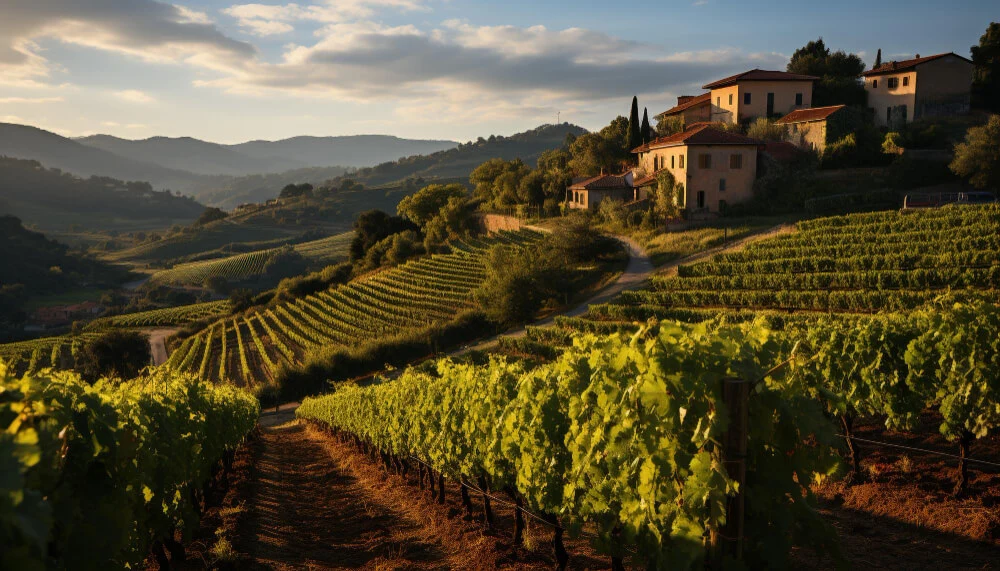
Updated On: March 29, 2024 by Yasmin Elwan
Georgia, nestled at the crossroads of Eastern Europe and Western Asia, holds a remarkable claim to fame in the world of viticulture – it’s widely recognised as the birthplace of wine. With an unbroken history of winemaking that stretches back thousands of years, the ancient vineyards of Georgia offer a living testament to the country’s deep-rooted traditions and innovations in wine production. The fertile valleys and protective slopes that cradle Georgia’s vineyards create an emblematic landscape for nurturing the assortment of indigenous grape varieties found nowhere else on Earth.
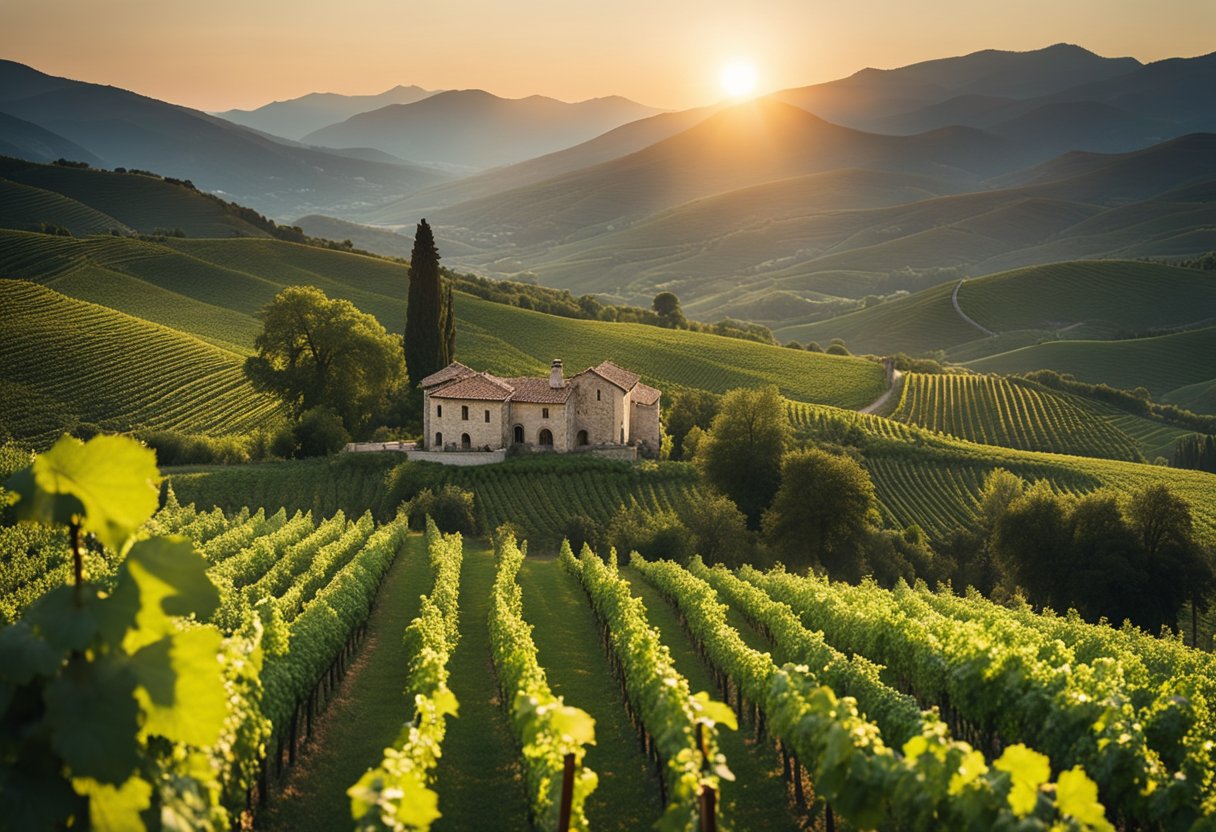
The methods of wine storage and ageing in Georgia are equally unique, featuring the traditional qvevri – large clay vessels buried underground to ferment and store wine. Not only does this ancient technique encapsulate the essence of Georgian winemaking, but it also symbolises the culture’s enduring bond with its wine.
Furthermore, the cultural significance of Georgian wine permeates every facet of its society, from rituals to daily life, cementing its place as an intrinsic part of national identity. As archaeologists uncover evidence that cements Georgia’s status as a pioneer of viticulture, the nation continues to face the challenges of climate change and modernisation while striving to preserve its precious winemaking heritage.
History of Georgian Wine
In this section, we shall uncover the fascinating evolution of wine production in Georgia, a journey that spans over 8,000 years and showcases the ingenuity of ancient civilisations.
Neolithic Roots
Evidence unearthed by archaeologists suggests that Georgia’s relationship with viticulture dates back to the Neolithic era. Findings indicate that as far back as 6000 BC, the people in the South Caucasus region were producing wine, making it arguably the oldest known site for winemaking in the world. This ancient tradition is encapsulated by the discovery that wild grape juice was fermented into wine by being buried over the winter in shallow pits, a rudimentary yet effective method of winemaking.
Antiquity to Middle Ages
As early civilisations such as the Greeks, Romans, and Persians came into contact with Georgia, they encountered a well-established wine culture. These interactions greatly influenced wine production and the exchange of viticultural knowledge. By the medieval period, Georgian wine had garnered significant importance, with monasteries playing a pivotal role in its preservation and refinement. The monastic communities were custodians of viticulture – meticulously copying and safeguarding ancient texts and honing their craft in secluded vineyards.
Modern Developments
In recent history, Georgia has experienced both providence and challenges in winemaking. The Soviet era was particularly notable, as Georgian wines were highly valued across the Soviet Union, distinguishing themselves through unique flavours and traditional methods. Present-day Georgia continues to pay homage to its long-standing viticultural heritage while embracing modern techniques. This merge of ancient practices with contemporary innovation ensures that Georgian wine not only survives but thrives in the global market, honouring an uninterrupted tradition that is truly ancient.
Geography and Climate
We find that the unique geography and climate of Georgia have played pivotal roles in shaping its ancient viniculture. Steeped in a rich history that intertwines with the very origins of wine, the landscapes here provide an optimal setting for viticulture.
Caucasus Mountains
Nestled between Europe and Asia, the Caucasus Mountains serve as a natural border, creating a significant climatic barrier that influences the geology and weather patterns crucial for grape cultivation. These mountains contribute to the moderate climate that prevails over Georgia’s prime winemaking territories, protecting the vineyards from the harsh cold of the Russian steppes to the north.
Kakheti Region
Specifically, within the Kakheti region, east of Tbilisi and near the border with Azerbaijan, the unique microclimates and fertile valleys pose an ideal environment for vineyards. Kakheti’s climate is moderated by the mountain ranges that surround it, providing adequate rainfall, abundant sunshine, and a steady tempering effect which showcases the harmonious connection between geography and the quality of wine produced.
Viticulture in Georgia
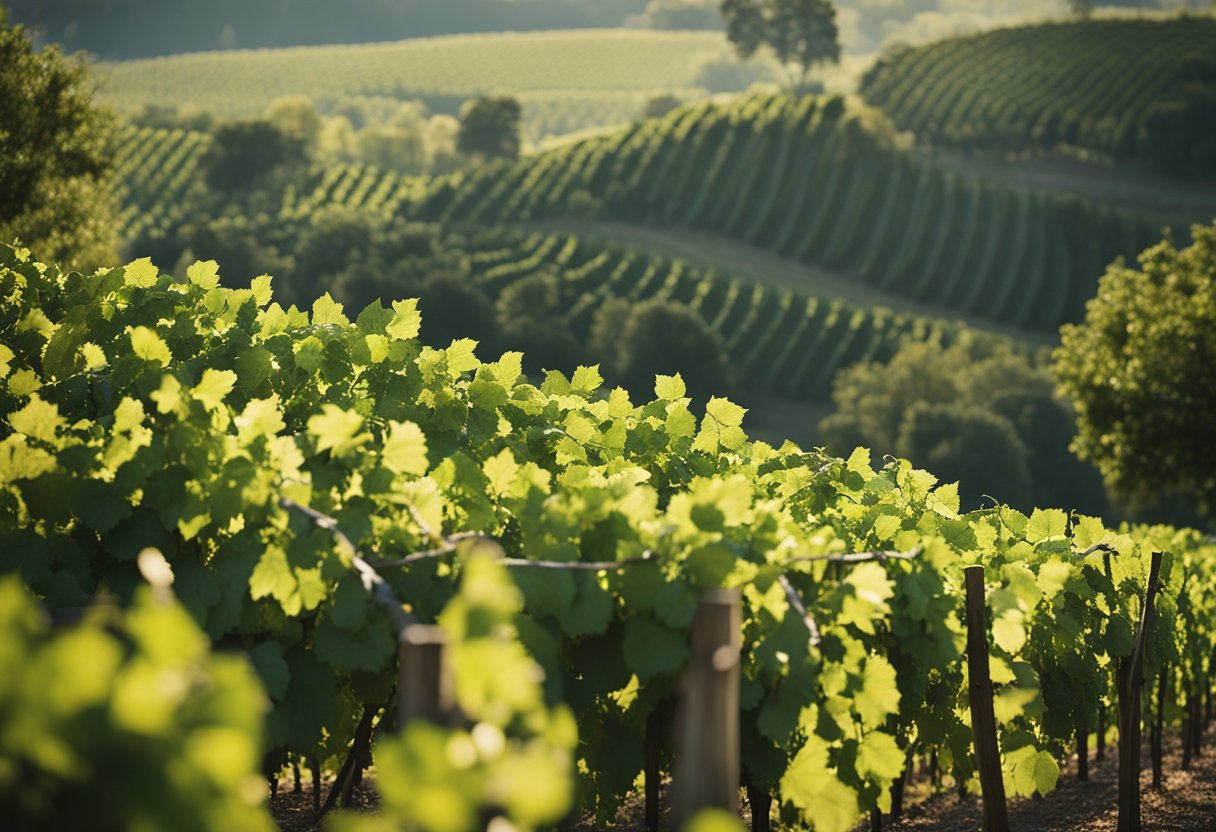
We explore the ancient wine-making traditions of Georgia, where viticulture has flourished for millennia, giving rise to unique practices and grape varieties.
Traditional Vineyard Practices
In Georgia, wine production is deeply intertwined with traditional methods that have stood the test of time. The vineyards are tended with a combination of age-old wisdom and practices passed down through generations. Notably, the use of qvevri, large clay pots buried underground, remains a hallmark of the Georgian wine-making process. Grapes are fermented in these vessels, allowing the wine to develop a distinctive character influenced by the earth.
Indigenous Grape Varieties
Georgia boasts an impressive range of indigenous grape varieties, with the Saperavi grape being particularly noteworthy. This dark-skinned variety is cherished for its robust profile, which is capable of producing deeply colored, full-bodied red wines, often with compelling tannic structures. The unique microclimates and varied terrain across Georgian vineyards nurture the diverse expressions of both red and white grapes, cementing the country’s reputation as a cradle for viticulture.
Winemaking Techniques
In the verdant valleys of Georgia, we find winemaking techniques steeped in history, with the Qvevri method standing as a testament to the deep-rooted traditions. The fusion of ancient customs with modern technology continues to shape the identity of Georgian wine.
Qvevri Method
The Qvevri method is a quintessential component of Georgian winemaking, a practice recognised by UNESCO as an expression of our intangible cultural heritage. In this process, grapes undergo fermentation and ageing in large clay pots called Qvevri, which are buried in the earth. This ancient technique allows the wine to ferment naturally at a stable temperature, melding the flavours and textures into a richly complex end product. Grapes are left in these vessels along with the skins, seeds, and sometimes stems, enhancing the distinctiveness of the wine created through this method.
International Influence
Our winemaking has intrigued vintners and connoisseurs worldwide, leading to an integration of Georgian techniques with international practices. While preserving the essence of the Qvevri method, we have seen a growing trend where winemaking technology from other parts of the world has been brought in to refine the process. This fusion respects our traditions while also allowing for innovation, resulting in a diverse array of wines that can cater to a broader audience. The international influence does not supplant our methods but serves to shine a light on the unique properties of Georgian wine fermentation.
Vineyards of Georgia’s Cultural Significance
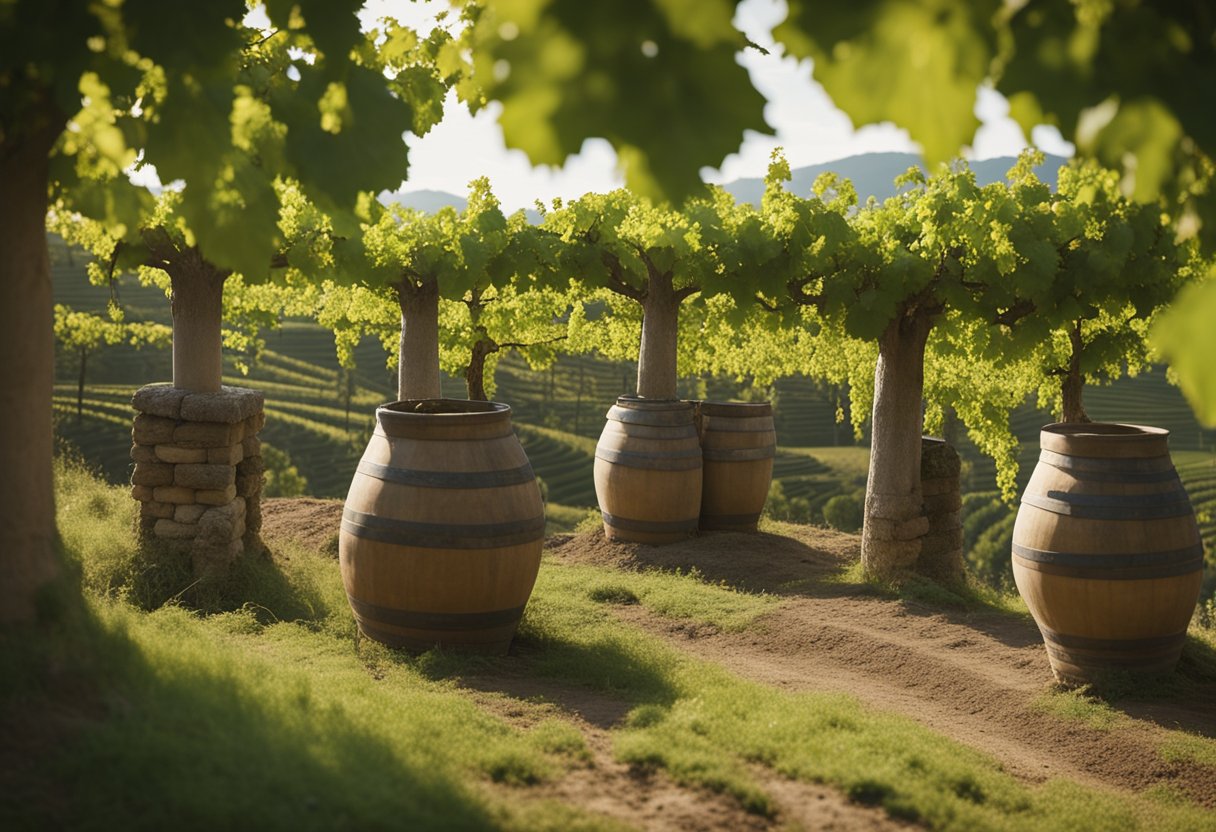
In Georgian culture, wine is far more than a beverage—it’s a pivotal element deeply entrenched in the nation’s heritage and daily life.
Religious Influence
In our exploration of Georgia’s viticultural heritage, we find that wine interweaves with the spiritual fabric of the country. Monks in Georgia have long maintained vineyards, regarding wine as a gift from God and utilising it in religious ceremonies dedicated to Bacchus, the god of wine. To this day, many monasteries continue this time-honoured tradition, producing wine revered both for its quality and sacredness.
Wine in Georgian Rituals
Wine in Georgia transcends everyday consumption and is integral to rituals and celebrations. At the Gurjaani Wine Festival, participants pay tribute to the ancient traditions of winemaking. It’s a time when wine flows abundantly, symbolising generosity, prosperity, and good fortune, essential components of Georgian hospitality.
Grape Varieties and Wines
Exploring the vineyards of Georgia brings us face to face with a spectacular range of grape varieties, each playing a crucial role in the nation’s storied winemaking tradition. We’ll discover the distinct types of reds and whites that form the backbone of Georgia’s wines and delve into the unique regional blends that set Georgian vinos apart.
Reds and Whites
In Georgia, the diversity of viticulture is best expressed through its indigenous grape varieties. Among the reds, Saperavi stands out as a prominent variety, known for its deep colour and robust tannic structure. This grape produces wines that are rich, full-bodied, and capable of significant ageing. On the spectrum of whites, Rkatsiteli plays a leading role. It has a unique flavour profile, accumulating a perfect balance between acidity and aromatics to create wines that range from crisp and refreshing to complex and textured.
Unique Regional Blends
As we traverse the Georgian wine landscape, we encounter unique regional blends that underscore the country’s wine identity. The eastern region of Kakheti, for example, is renowned for its amber wines. These are made predominantly from white grapes such as Rkatsiteli, which are fermented with their skins in qvevris, traditional large clay vessels buried underground, resulting in a wine of distinct character and taste.
In the West, wines from Imereti tend to be lighter and made through a mix of local grape varietals, featuring both reds and whites, which often carry floral notes and a softer palate. Each Georgian region contributes its own distinctive expression to the country’s vast vino tapestry, informed by its specific climate, grape, and centuries-old winemaking practices.
Wine Storage and Ageing
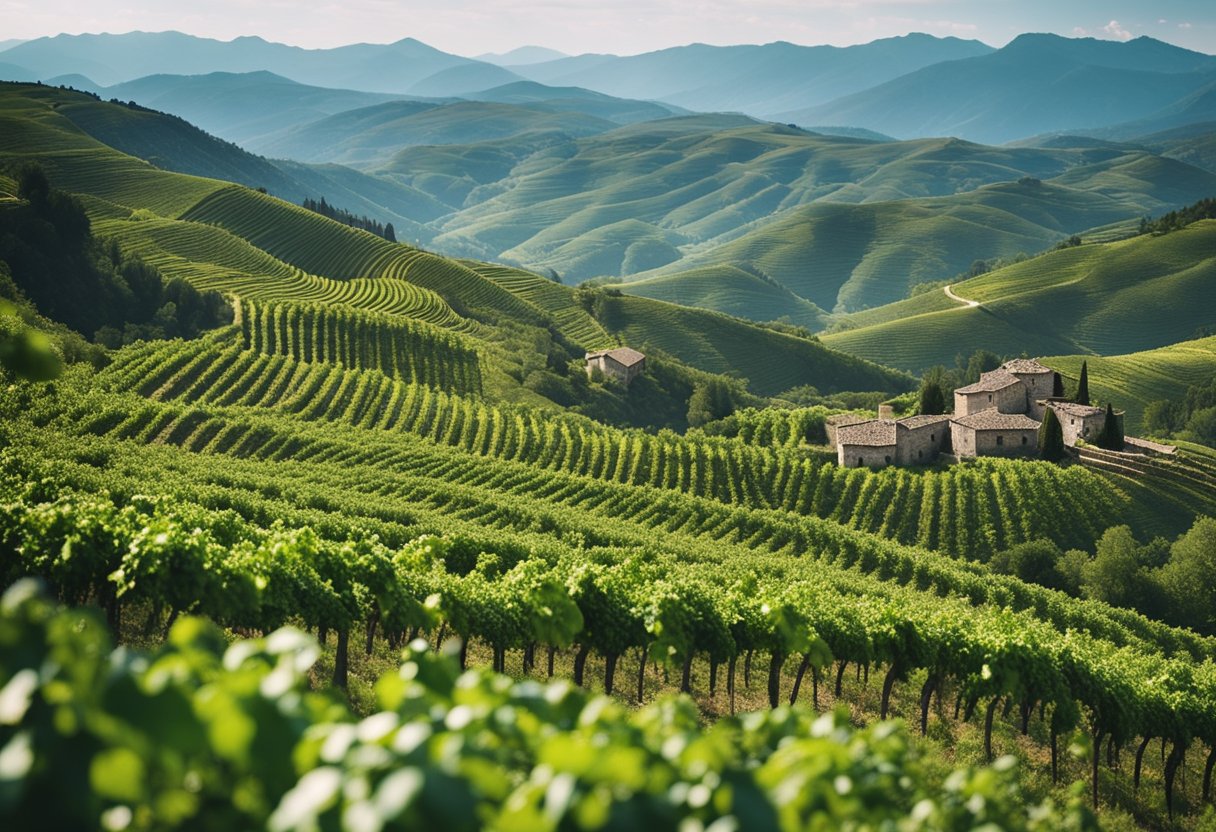
When we explore the rich tradition of Georgian winemaking, the practice of how we store and age wine emerges as a key component of the craftsmanship involved. These elements play a crucial role in the development of the wine’s character and quality.
Qvevri and Beyond
Qvevri are the heart of traditional Georgian wine storage and ageing. These large, egg-shaped earthenware vessels are buried underground, creating a stable temperature to store and age wine. The use of qvevri is an ancient method, as Georgian winemakers believe it imparts a unique complexity to the wine, enhancing its aroma and depth of flavour over time. Wines aged in qvevri can range from crisp whites to rich, amber-tinged varieties.
Wine Cellars in Georgia
In Georgia, traditional wine cellars, known as marani, serve as sanctuaries where bottles of wine are gently aged. Here, the wine rests in a quietude that allows it to mature gracefully, developing a harmony of taste and texture. Georgian wine cellars are a testament to the winemakers’ respect for both time and the wine itself, ensuring each bottle reaches its potential before it graces our tables. These cellars, often centuries-old, are imbued with the history of Georgian winemaking, contributing to the wine’s storied journey from vine to glass.
The Global Journey of Georgian Wine
In this section, we explore the transformation of Georgian wine from a national treasure to a globally recognised delight, detailing its trade routes and its current standing in the international market.
Trade and Expansion
Historically, Georgia has been at the crossroads of East and West, which facilitated the country’s role in the early trade of wine. The famed Silk Road served as a conduit for Georgian wine, enabling its expansion towards Russia, a country which later became one of the largest markets for Georgian wine. Georgia made inroads into Western Europe as well, with France and Italy recognising the distinctiveness of Georgian varietals.
The ancient traditions, coupled with qvevri wine-making methods, piqued the interest of neighbouring regions like Greece and beyond, as Georgian wine carved out its niche in the broader wine region lexicon. This trade not only introduced Georgian wine to the world but also brought economic prosperity, contributing significantly to the Georgian economy.
Contemporary Georgian Wine Market
In recent times, Georgian wine has experienced a renaissance in popularity, becoming emblematic of the rich wine region heritage. Modernisation of production and marketing has seen Georgian wine flourish in new markets—most notably China, where appreciation for these unique wines is growing.
Georgian estates have established connections with California, sharing knowledge and cultivating new devotees. The contemporary market is a dynamic one, where Georgian wine continues to make its mark globally, with sustained growth truly showcasing the resilience and appeal of this ancient yet ever-evolving wine culture.
Challenges and Preservation

The venerable vineyards of Georgia have faced considerable challenges throughout history, enduring everything from invasions to political upheaval. Yet despite these difficulties, efforts have been consistently made to preserve the ancient Georgian winemaking.
Historical Adversities
Georgia’s wine culture has been under siege from numerous invasions and wars, reflecting the turmoil that has swept through the region over the centuries. Dominations by various empires, notably during the time of the Soviet Union, greatly influenced and, at times, stifled the traditional winemaking practices of Georgia. The Soviet emphasis on quantity over quality led to a decline in the diversity of Georgian grape varieties.
Modern-Day Threats and Conservation
Today, we face a different kind of threat—modernisation and globalisation, which potentially risks homogenising our unique vinicultural heritage. By contrast, conservation efforts are of paramount importance, with a pivotal role played by figures such as Patrick McGovern, who has contributed significantly to the understanding and historical study of ancient beverages, including Georgian wine. In the same spirit, various initiatives aim to preserve and revitalise these ancient vineyards, ensuring that the Georgian winemaking traditions, revered as among the oldest in the world, continue to thrive amidst modern challenges.
Scientific and Archaeological Discoveries
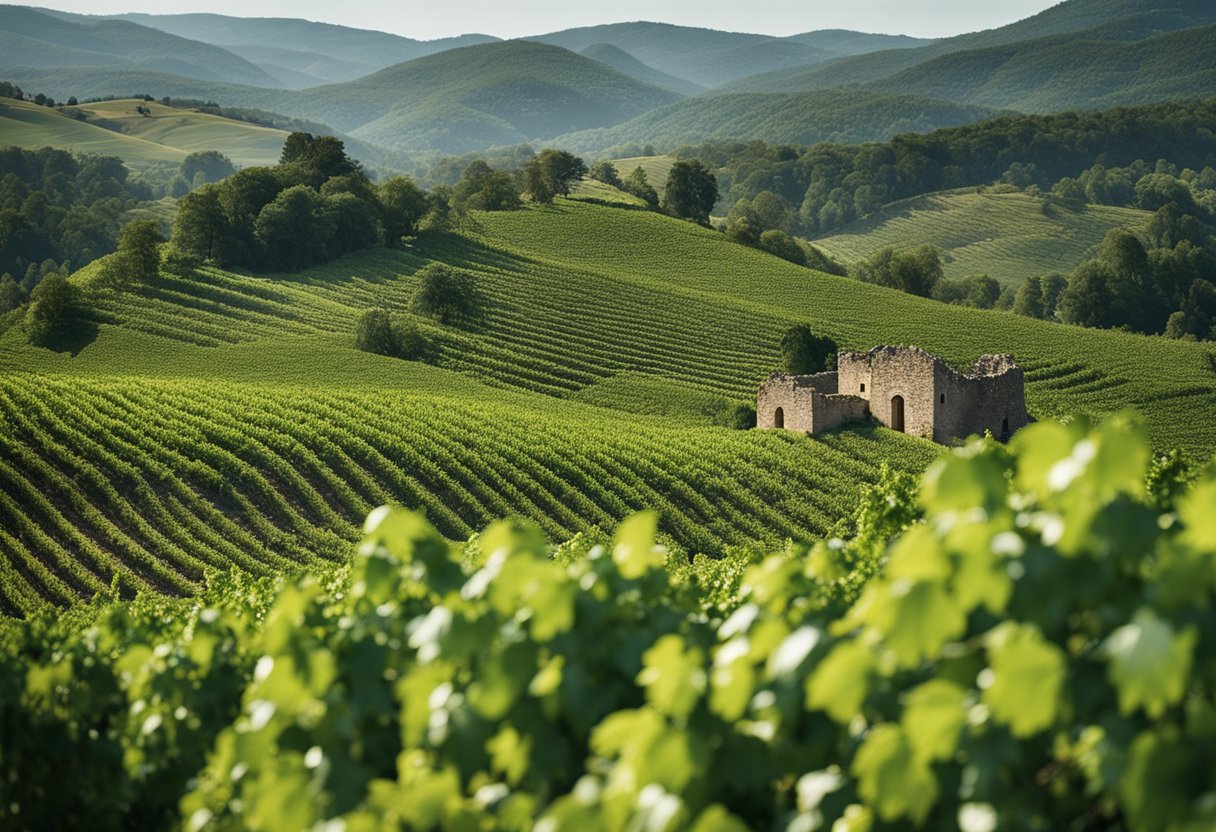
In our quest to understand the origins of viticulture, Georgia stands out with remarkable evidence that confirms its ancient winemaking tradition. These findings have shed light on a Neolithic era that fostered the birth of wine.
Ancient Artefacts
At the heart of the South Caucasus region, Georgia boasts discoveries that have significantly contributed to our knowledge of prehistoric winemaking. Among these are pieces of clay pottery dating to around 6,000 BC, located in the areas now known as Shulaveris Gora and Gadachrili Gora. These shards bear the residual chemical signatures of wine, specifically tartaric acid, which is a key fingerprint for identifying the presence of grapes and therefore, wine. This crucial discovery was made in collaboration with both the University of Toronto and the Georgian National Museum, highlighting an 8,000-year-old history that predates previous records of wine production.
Ongoing Research
Our research into the origins of viniculture does not halt at these artefacts. Ongoing research into these ancient Georgian vineyards continues to provide insights into early agricultural practices. Scientists, including teams from Stanford University, have published findings in journals such as Pnas, presenting detailed analyses of these early winemaking techniques.
Engaged in a methodical study, researchers are comparing these findings to other ancient sites known for early alcohol production, such as Jiahu in China, to map the diffusion of winemaking practices across Eurasia. Through meticulous excavation and collaborative international research, we are piecing together a more comprehensive picture of this cornerstone of human culture.
Frequently Asked Questions
In this section, we explore some of the most commonly posed questions about Georgia’s ancient vineyards, delving into the unique characteristics that have shaped the birthplace of wine.
What are some of the oldest vineyards in Georgia known for initiating the wine-making tradition?
Georgia’s wine-making tradition is rooted in its ancient vineyards, with regions like Kakheti and Imereti being home to some of the country’s oldest vines. These areas are renowned for continuing millennia-old viticultural practices.
How does Georgian traditional wine-making differ from modern practices?
Georgian traditional wine-making is distinguished by its use of qvevri, large earthenware vessels buried underground, where wine ferments and matures naturally, imbuing it with distinct earthy characteristics.
Which regions in Georgia are renowned for their historical significance in the development of viticulture?
Kakheti, Kartli, Imereti, and Racha are key regions in Georgia, each with a rich history of viticulture that has contributed significantly to the country’s reputation as the cradle of wine.
Can you cite significant archaeological findings that support Georgia as the cradle of viticulture?
Archaeological findings in Georgia, such as those in the Kvemo Kartli region, featuring 8,000-year-old wine residues inside ancient clay vessels, affirm its status as a pivotal site in the history of viticulture.
What are the key characteristics and profiles of Georgian wines that reflect their ancient origins?
Georgian wines are noted for their diversity, with unique grape varieties offering a wide range of flavours, from the robust, tannic reds of Saperavi to the floral, aromatic whites of Rkatsiteli.
How can one experience the historical wine culture of Georgia through tours or tastings?
Wine enthusiasts can immerse themselves in Georgia’s wine heritage through curated tours and tastings that often include visits to traditional vineyards, qvevri wine-makers, and historical monasteries where monks have made wine for centuries.






